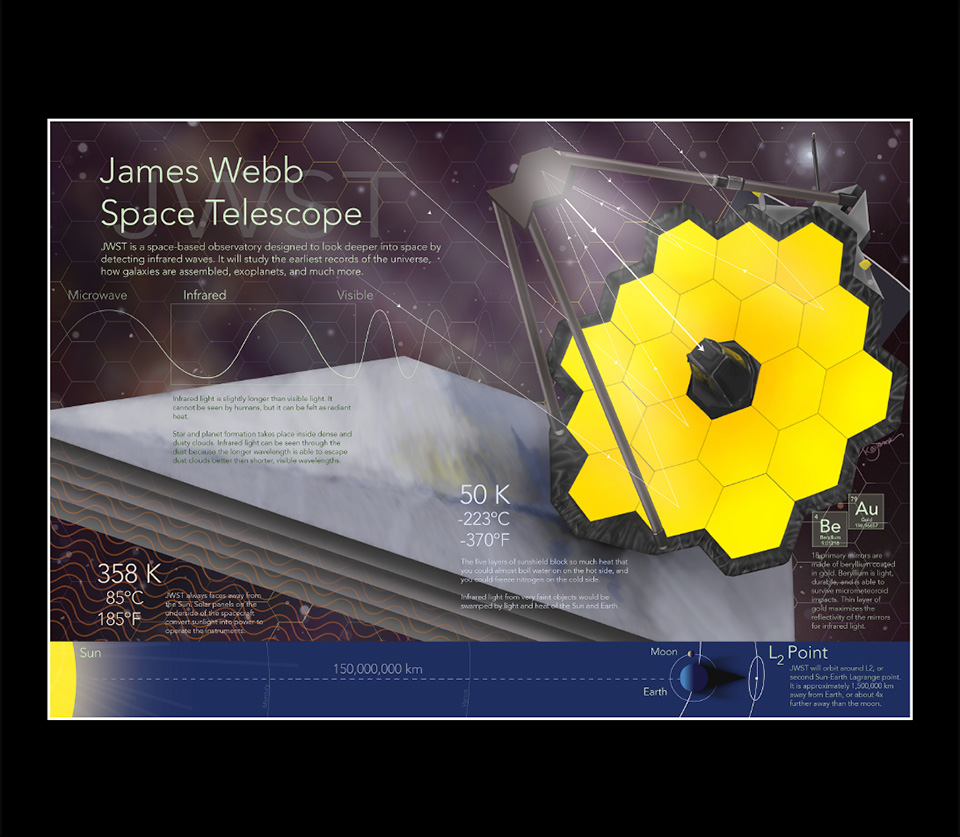
Ikumi Kayama
James Webb Space Telescope, 2017
Digital illustration
Graphite; Adobe Photoshop; Adobe Illustrator
Studio Kayama, LLC
Riverdale, Maryland, United States
The James Webb Space Telescope (JWST) is currently scheduled to launch in 2021. Designed to take over the duties currently provided by the Hubble Space Telescope, the JWST has a few key differences and improvements. First, the JWST’s primary mirror comprises 18 hexagonal segments and is 6.5 meters (21 feet) across, compared to 2.4 meters (nearly 8 feet) for the Hubble’s primary mirror. Second, because a mirror this large would be too heavy to launch into orbit if it were made of glass—as the Hubble is—the mirror segments are made from beryllium, which is both strong and light. In addition, the mirror segments are coated in gold to better reflect infrared radiation because the JWST will make observations primarily in the lower frequency wavelengths of the electromagnetic spectrum (while the Hubble made observations in the ultraviolet and visible parts of the spectrum). This will allow the JWST to “see” through space dust and to observe very old and distant high redshift objects. In order to observe using such low wavelengths, the telescope needs to stay very cold; it contains five layers of heat-blocking sun shields. Finally, the JWST will not be positioned in Earth’s orbit as the Hubble is but will be placed farther away from the Earth, at the L2 Lagrangian point.
This informational poster was designed to visualize the telescope basics for the enthusiastic public. The artist was invited to NASA’s Goddard Space Flight Center to observe the telescope in production and to discuss its features with the JWST team, which included scientists, engineers, and outreach educators. The poster was created to share JWST’s exciting project to better understand the origins of the universe.
